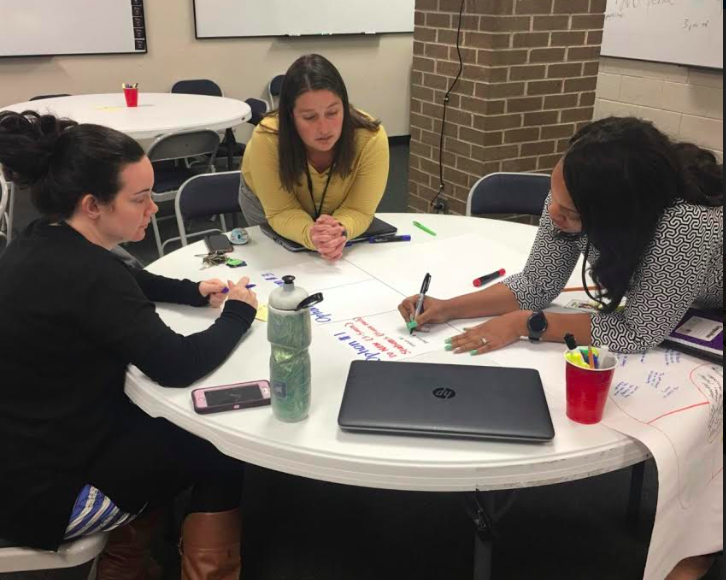Written by Kathy Post.
George J. Roy, University of South Carolina, roygj@mailbox.sc.edu
Cassy Paschal, Irmo Middle School, cpaschal@lexrich5.org
Erin Doty, Irmo Middle School, ecdoty@lexrich5.org
In our experience, a collaborative PDS partnership begins with a PD goal in which the complementary expertise of the partners in P-12 school and higher education are united. In the PD collaboration described in this paper, the underlying PD goal was focused upon exploring ways for all middle grades learners to participate during their mathematics classroom experience.
Due to the unique developmental changes students experience during middle school, subject matter in the middle grades must be challenging, empowering, and equitable (AMLE, 2010). Foundational in our collaboration, is that all students are capable of learning mathematics (NCTM, 2014), however, some students choose to participate or are allowed to participate in relation to how they or others perceive them as smart; a student’s status in a mathematics class is intertwined with their standing socially and academically. Students with higher status often get the opportunity to participate more often than students with a lower status (Wood et al., 2019). With this in mind, addressing status in the mathematics classroom was the emphasis of our collaborative PD sessions with teachers. Specifically, we sought to support the mathematics teachers in integrating small-group mathematics instruction as part of their practice (Dixon, Brooks, & Carli, 2018; Lempp, 2017). As one might imagine, this expectation was met with concern from the teachers, as such, the exploration of effective mathematics practices became a major focus of the ongoing dialogue of our monthly PD sessions.
The PD sessions surfaced many of challenges the teachers faced including moving past the familiar instructional practices to take instructional risks and add to known instructional practices, as well as, to see small-group instruction as an effective instructional model. Among the celebrations that occurred during the school year included a department-wide increase in dialogue around effective instructional practices including moving from a teacher-centered, “sit and get” environment to a more collaborative, student-centered environment; using challenging tasks; and data driven instruction.
By the end of the year, the teachers’ shift in practice led to students noticing how small-group instruction impacted their opportunity to be active participants in their mathematics learning:
“I like that we can interact with others and figure it out together and help each other if we need it” -7th grade student
“I like doing the teacher station because I understand it better when it’s only a small group and not the whole class” -7th grade student
References
AMLE (2010). This We Believe: Keys to Educating Young Adolescents. Westerville, OH: National Middle School Association.
Dixon, J. K., Brooks, L. A., and Carli, M. R. (2018). Making Sense of Mathematics for Teaching the Small Group. Bloomington, IN: Solution Tree.
Lempp, J. (2017). Math Workshop: Five Steps to Implementing Guided Math, Learning Stations, Reflection, and More. Sausalito, CA: Math Solutions.
NCTM (2014). Principles to Actions: Ensuring Mathematical Success for All. Reston, VA: Author.
Wood, M. B., Sheldon, J., Felton-Koestler, M. D., Oslund, J., Parks, A. N., Crespo, S., and Featherstone, H. (2019). 8 Teaching Moves Supporting Equitable Participation. Teaching Children Mathematics 25(4), 218-223.
